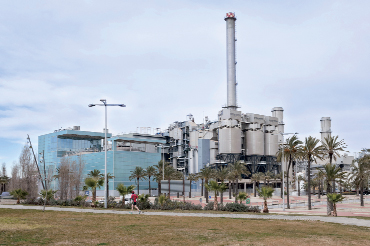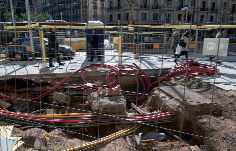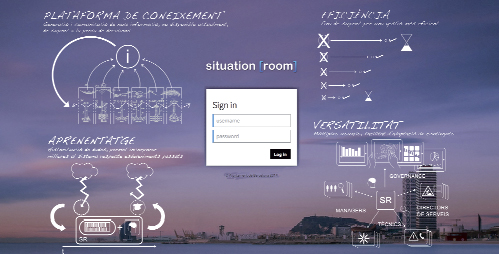Barcelona’s Department of Urban Resilience has decided to integrate all the city’s operations information to prevent or mitigate incidents and accidents that could have a negative impact on the everyday lives of residents.
This integration has made it possible to define risks and make diagnoses in order to design strategies and projects to protect the city’s infrastructure. These are some examples of the actions that have been drawn up, implemented or are underway in Barcelona’s resilience plan.
The water cycle
The strategy includes an increase in rainwater harvesting. The city’s drains cannot always absorb torrential rains, so to stop rainwater from overflowing or creating mud blockages in the system, tanks have been built to hold it. These tanks also prevent sediment and other torrential rainwater waste matter from flowing out uncontrolledly into the sea. With the accumulated water in tanks, the flow that reaches the purification plants can be regulated and, once the downpour abates, all the water that is gradually put back into the drainage system will be treated before it reaches the sea.
Infringement between gas and water mains
In Poblenou a serious incident occurred in which residents were left without heating or hot water due to water leaking into the gas mains. In order to prepare a response to this kind of incident, a protocol has been drawn up by the City Council’s Civil Protection Department and the utility companies. Representatives from the companies must meet at the location in which the incident has occurred until responsibility has been ascertained.
This will increase responsiveness, reduce outage times and improve coordination between utilities to avert a potential domino effect of faults.
Instruction manual for the city’s tunnels
The Urban Habitat Department has audited the condition of the city’s tunnels and detected a weak point: there were multiple contracts with different companies to manage the tunnels. This rang some alarm bells: if there was to be an accident or fault, it would be difficult to ascribe responsibility and to obtain an immediate response and solutions.
The resilience plan includes a change in the way contracts are given, to guarantee integrated maintenance and operations. The tunnels are now managed by only one company with a single chain of command. To ensure that this new model works effectively, a draft Technical Instruction Manual has been produced for the design and operation of road tunnels in Barcelona. Among other things, it includes all the basic regulations that must be met in terms of tunnel safety, currently spread across different Spanish and European laws and directives.
Integrating all the operations information
Barcelona’s Department of Resilience, in partnership with the Municipal Institute of Information Technology (IMI), has set up the so-called Situation Room, an information management platform which is currently being developed and implemented and will have the capacity to process and visualise different types of data. From the intersecting data across all the municipal departments, a multi-layered map is emerging, showing where the gas and water mains, electrical grid and telephone cables are located. A team in the Control Centre collaborates with the utility companies to improve the notification of incidents, and there is case-by-case reasoning to determine the seriousness of the event and the procedure for transmitting the relevant information.
The Urban Habitat Department intends to sign agreements (some have already been finalised and others are under way) with all the utility companies that have committed to sharing information of public interest. Each company has its own communications protocol with the Urban Habitat Department, which sets out the specific way in which they must be notified of a faulty service. The utility companies not only have to provide maps of their networks but also information on the actual network infrastructure, which should facilitate decision-making if, for example, a pavement splits open. This information should make it possible to quantify the number of users affected by a fault and identify the damage to vital facilities (schools or hospitals) and to public mobility.
Redundancy in utility networks

Pipes that connect the water systems of the Ter and the Llobregat rivers through the Collserola mountains.
Redundancy is one of the key issues in resilience. A utility network in the form of a grid is able to maintain services because of the surplus of some of its elements, even when supply is cut at one point. To this end, projects have been carried out to ensure the supply of drinking water. They include interconnecting reservoirs at the head of the Ter and Llobregat networks, as well as investment planning and actions at different pressure levels to ensure that supply reaches every point in the city.
Another example of redundancy in urban utilities is the protocol that has been drawn up to ensure that compressed natural gas (the fuel used by part of the city’s fleet of buses and waste collection vehicles) can be shared by the energy companies during an incident.







